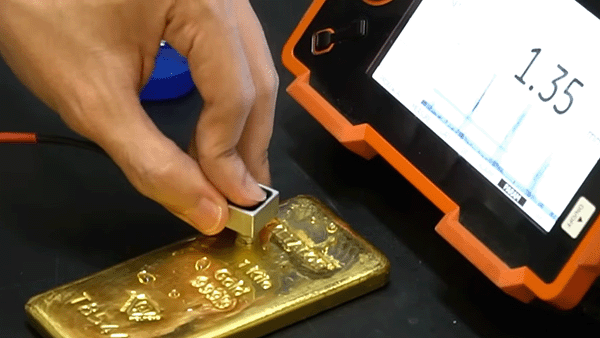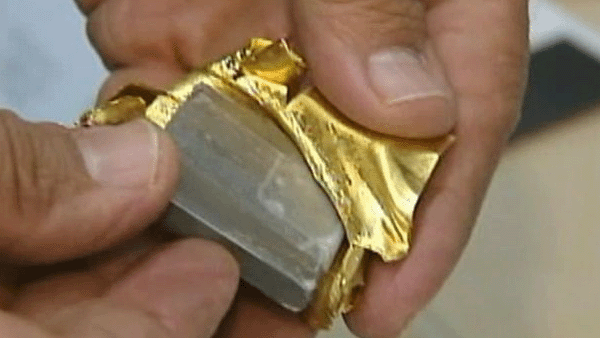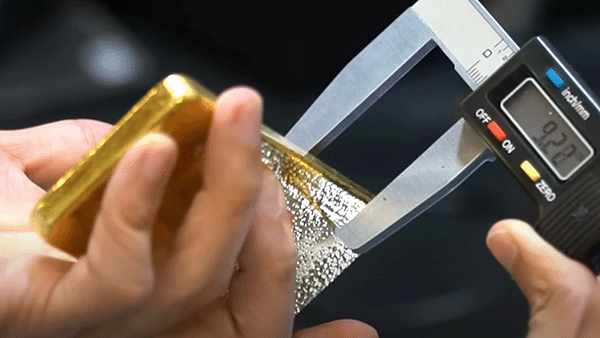How is Ultrasound Testing Used to Authenticate Precious Metals?
6 June 2023

Gold and silver have been cherished for centuries, captivating humankind with their allure and enduring value. As these precious metals continue to hold a significant place in the global economy, the need for accurate and non-destructive testing methods has become paramount.
Enter ultrasound technology, an important testing technique often used by many industries to detect cracks, fractures, and defects in objects. How is ultrasound used in gold and silver testing? Let’s find out in this article.
The Need For Reliable And Non-Destructive Testing Methods
In the world of precious metals, the need for reliable and non-destructive testing methods is of paramount importance for investors, collectors, and traders alike. After all, who would want to buy precious metals only to discover later that they purchased counterfeit coins or bars?
However, traditional destructive testing methods, such as the fire assay or an acid test, can be effective but come at a high cost – the destruction of the very bullion bar or coin being tested. Such an outcome is obviously unacceptable for buyers of bullion bars and coins for investment purposes!
This raises the demand for alternative testing techniques that offer accurate results without compromising the physical integrity of precious metal items.
How Is Ultrasound Testing Used To Authenticate Precious Metals?
Ultrasound testing has become an invaluable tool for authenticating precious metals, providing a non-destructive and highly reliable method for verifying the purity and integrity of gold and silver items. In this process, high-frequency sound waves are directed into the metal, and their interactions with the material are analyzed to yield crucial information about its composition.
When it comes to silver and gold testing, an ultrasound machine is used to determine the thickness of the tested bullion bar or coin. This thickness measurement is then compared to the thickness of an authenticated sample to determine if the tested material is free from tampering.
What is the Speed of Sound Travelling Through Precious Metals?
Below is a table showing the celerity (speed of sound), density, and electrical conductivity of gold, silver, platinum, tungsten, and lead.
Celerity, Density & Electrical Conductivity of Precious Metals
| Metal | Celerity (m/s) | Density (g/cm³) | Electrical Conductivity (MS/m) |
| Gold | 3240 | 19.30 | 44.7 |
| Silver | 3650 | 10.49 | 61.35 |
| Platinum | 3830 | 21.06 | 9.4 |
Celerity, Density & Electrical Conductivity of Tungsten & Lead
| Metal | Celerity (m/s) | Density (g/cm³) | Electrical Conductivity (MS/m) |
| Tungsten | 5220 | 19.25 | 18.52 |
| Lead | 2160 | 11.34 | 5 |
Note:
- Celerity is the speed of sound through the material, measured in meters per second (m/s).
- Density is the mass per unit volume, measured in grams per cubic centimeter (g/cm³).
- Electrical Conductivity is the ability of a material to conduct electricity, measured in MegaSiemens per meter (MS/m).
Identifying a Fake Gold Bar That is Filled With Tungsten
It is common for many counterfeit gold bars to be made with tungsten to be gold plated. Tungsten is often the choice to fake gold bars as its density is very similar to pure gold. So how can we tell real gold from fake gold pieces?

From the tables above showing the material properties of precious metals and the two base metals, you can see that gold's density is 19.3 g/cm³ while tungsten's density is 19.25 g/cm³.
This extremely similar density means that a gold bar and a tungsten bar of the same weight will also have very similar dimensions. Therefore, a high-grade counterfeit gold bar made with tungsten with thick gold plating can be difficult to detect and could bypass surface testing methods such as X-ray fluorescence tests.
An ultrasound test would be extremely useful to detect the said fake gold bar since it is not a surface testing method. Instead, the ultrasound testing machine's probe sends sound waves into the entire gold piece.
Referring to the tables above again, you can see that the celerity (speed of sound) in gold and tungsten is vastly different. Therefore, a fake gold bar made with tungsten and gold plating can be detected easily using an ultrasound test!
Steps to Test Precious Metals with Ultrasound

- The technician uses a digital caliper to measure the thickness of an authenticated sample and the reading is recorded.
- A coupling gel is applied to ensure smooth transmission of sound waves between the ultrasound probe and the metal surface.
- With the ultrasonic testing equipment calibrated to the celerity of the metal being tested, the technician then places the probe on the item and emits ultrasonic waves into the metal.
- The ultrasound testing machine displays a reading as the sound waves travel through the material, encountering any impurities, voids, or variations in composition along the way. As the waves encounter different materials, they are reflected back to the probe allowing the material’s thickness to be measured.
- The ultrasound reading is then compared with the digital caliper’s measurement to determine if there are any differences in the materials’ compositions.
By analyzing the results of the ultrasound test, the technician can determine potential counterfeit materials embedded (e.g., gold plating, or presence of alloys, etc.) within the tested sample.
Tips to avoid fake bullion bars & coins
Now that you have learned more about how ultrasound tests are used for gold testing and precious metals testing, here are some tips to avoid buying fake bullion or fake gold jewelry pieces.
1. Buy from reputable bullion dealers
Buying bullion from reputable dealers is your best and first line of defense. A reputable bullion dealer like Silver Bullion sources its bars and coins directly from refiners, mints, and bullion wholesalers - entities that are plugged into the same international precious metals market that supplies precious metals to banks and central banks.
For these companies, bullion trading is their core business, and they have no incentive to risk reputation damage by selling counterfeit products.
2. Never rely on only one testing method
While there are many ways to test gold, it is crucial that you use more than one method to test gold. The above example of a fake gold plated bar that is made from tungsten shows that an X-ray fluorescence test may not be suitable since it is a surface testing method.
Similarly, a density test may produce a result that is very close to that of a genuine gold bar.
If you relied solely on either the X-ray test or density test, the fake gold bar would have probably passed the tests.
However, if you combine an ultrasound test in your testing, the counterfeit gold bar would be easily detected!
Some ultrasound gold testing machines can be purchased online, allowing you to test gold at home easily. Many are portable and can be carried with you to test gold jewelry and other metals. It is an additional test you can rely on to ensure that the gold is real!
3. Avoid too-good-to-be-true deals
If you come across online deals for gold and silver bullion at prices much lower than market prices, it is a red flag that the offered products are highly suspicious. The seller could be selling gold filled with tungsten instead of solid gold!
Today, it is common for bullion prices to be displayed online transparently by reputable dealers like Silver Bullion. These prices are quoted as a percentage above the gold spot price. Seldom are they below the gold spot price.
While the convenience of online shopping has opened up new avenues for purchasing precious metals like gold and silver, it is crucial for buyers to exercise caution and remain vigilant against too-good-to-be-true deals.

The Safe House Also Performs Ultrasound Tests
Since its inception in 2014, The Safe House has performed ultrasound tests for countless precious metals entering the vault’s premises. We conduct our non-destructive precious metals tests, including tests for density, thickness using ultrasound, surface composition using X-ray fluorescence, and electrical conductivity, from our testing labs at The Reserve. Once completed, bullion tests can be accompanied by a precious metals testing report.
We have many years of experience testing gold and testing gold jewelry. Our gold testing machines are well able to detect different fake gold items, from heavy gold plated bars, and gold filled with other metals, to gold alloys.
Please do not hesitate to contact us should you have any questions.